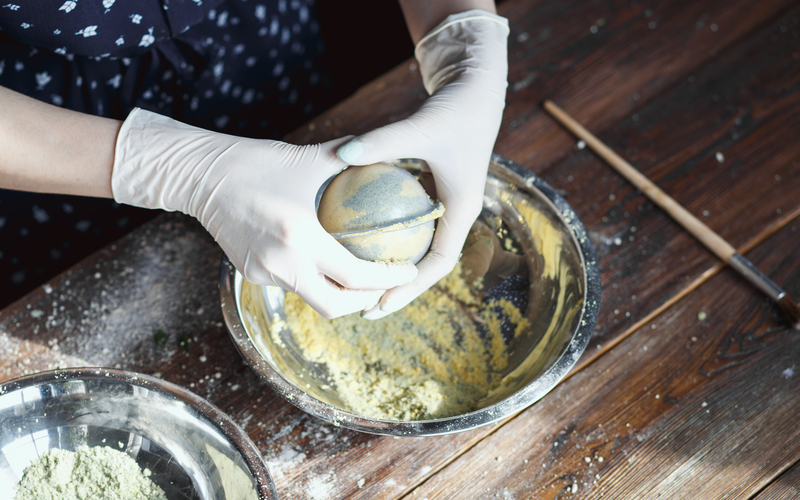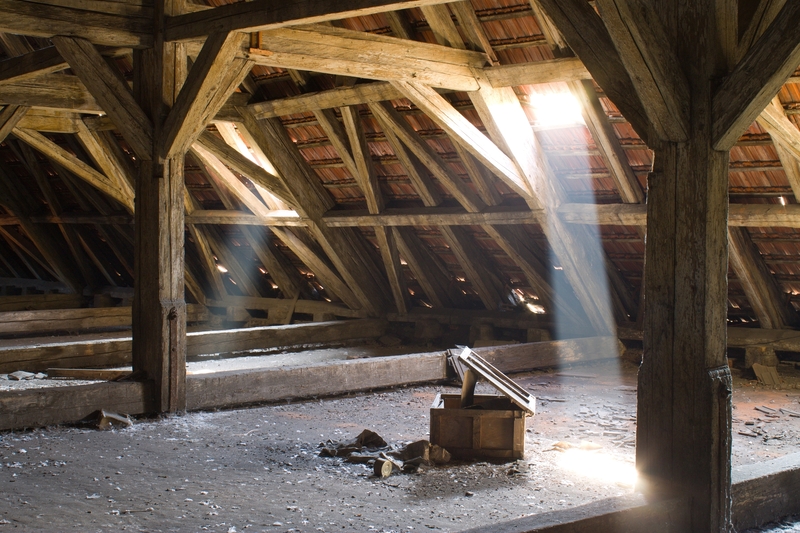Strategies for Ensuring Your Bathroom Stays Mold-Free
Posted on 09/06/2025
Strategies for Ensuring Your Bathroom Stays Mold-Free
Keeping your bathroom mold-free is essential not only for the sake of cleanliness but also for your health and home value. Mold thrives in warm, damp environments, and bathrooms are prime targets due to frequent exposure to moisture. In this comprehensive guide, we'll delve into effective strategies for ensuring your bathroom remains free of mold. From identifying problem areas to implementing preventative measures, you'll learn actionable tips to achieve and maintain a mold-free bathroom environment.
Why Mold Prevention in Bathrooms is Important
Bathroom mold isn't just unsightly--it can worsen allergies, trigger respiratory issues, and even compromise structural integrity of your home over time. Persistent mold growth often signals deeper issues like poor ventilation or leaks, which, if neglected, become costly repairs. Implementing bathroom mold prevention strategies can reduce health risks and preserve your home's aesthetics and value.

Common Causes of Bathroom Mold
Before exploring solutions, it's important to understand why mold appears in bathrooms. Here are the most frequent contributing factors:
- High humidity: Daily showers and baths significantly increase moisture in the air.
- Poor ventilation: Insufficient air circulation allows moisture to linger, which is ideal for mold growth.
- Water leaks: Leaky faucets, pipes, or showerheads create persistent dampness.
- Organic surfaces: Bathroom materials like grout, drywall, and wood are susceptible to mold.
- Lack of cleaning: Soap scum and debris provide nutrients for mold colonies.
Comprehensive Strategies for a Mold-Free Bathroom
Achieving a mold-free bathroom requires a proactive approach. Below are detailed methods to prevent mold growth and keep your bathroom safe and fresh.
1. Maximize Bathroom Ventilation
The most effective bathroom mold prevention strategy is improving air circulation. Mold spores need humid and stagnant air to thrive. To counter this:
- Install or upgrade exhaust fans: A high-quality exhaust fan efficiently removes excess moisture from the air. Always run the fan during and at least 20 minutes after bathing or showering.
- Open windows: Whenever possible, open bathroom windows to let in fresh air and help dry out the space naturally.
- Encourage cross-ventilation: Opening doors after use or using a door stopper can help circulate air throughout your home, further reducing humidity.
2. Control Humidity Levels
Bathrooms are naturally humid environments, but keeping relative humidity below 50% deters mold. Try these approaches:
- Use a dehumidifier: In persistently damp bathrooms or homes in humid climates, a small dehumidifier can make a big difference.
- Monitor humidity: Invest in a digital hygrometer to check humidity levels. Adjust ventilation or use a dehumidifier as needed.
- Wipe down surfaces: After showering or bathing, quickly towel off wet walls, mirrors, and floors to reduce lingering moisture.
3. Fix Water Leaks Immediately
Unnoticed leaks are one of the primary causes of bathroom mold. Even a small drip behind a cabinet or under a sink can eventually create a mold problem. To avoid this:
- Inspect plumbing regularly: Periodically check all visible plumbing connections for leaks or moisture accumulation.
- Address caulking gaps: Cracked or missing caulk around tubs, showers, and sinks can permit water infiltration. Recaulk regularly with a high-quality waterproof sealant.
- Repair immediately: If you spot water stains, musty odors, or warping, locate and fix the source immediately before mold has a chance to grow.
4. Use Mold-Resistant Materials and Paints
Building or renovating your bathroom? Opt for mold-resistant materials:
- Mold-resistant drywall: Greenboard and purple board are designed for high-moisture environments and resist mold growth better than standard drywall.
- Water-resistant paint: Specialized paints and primers with mold inhibitors provide an extra protective barrier on walls and ceilings.
- Sealed grout and tile: Porous grout can absorb water. Use a sealer regularly to protect grout lines and select non-porous tiles where possible.
5. Maintain a Consistent Cleaning Routine
A regular, thorough cleaning schedule helps prevent mold spores from multiplying. Remember the following key points:
- Clean weekly: Use a bathroom-specific, anti-fungal cleaner or a mixture of vinegar and water on all surfaces (tiles, grout, faucets, and shower doors).
- Focus on grout and caulk lines: These areas are the most vulnerable to mold. An old toothbrush dipped in cleaning solution works well for scrubbing these spots.
- Wash shower curtains and mats: Fabric or plastic shower curtains and floor mats can harbor mold. Clean or wash them frequently on a hot cycle.
- Dry bath towels promptly: Wet towels left in a heap or on the bathroom floor will rapidly develop moldy odors and can spread spores.
6. Avoid Clutter to Enhance Air Circulation
Overcrowded bathrooms can restrict airflow and trap moisture. To keep your bathroom mold-free:
- Reduce unnecessary items: Limit the number of products in your shower and on countertops. Store only essentials in the bathroom.
- Allow air to circulate: Avoid letting items press against the walls; this ensures every surface can dry out properly after use.
7. Incorporate Natural Mold Deterrents
Several natural substances are known for their mold-fighting properties. Integrate these solutions into your cleaning routine:
- White vinegar: Spray undiluted white vinegar on problem areas, let sit for an hour, then rinse and dry thoroughly.
- Baking soda: As a gentle abrasive, baking soda can scrub away early signs of mold in grout and caulk.
- Tea tree oil: Add a few drops of tea tree oil to water in a spray bottle and use it as a daily shower spray. Its natural antifungal properties can inhibit mold regrowth.
Tip: Always test natural solutions on a small area before widespread use.
Long-Term Steps for Mold Prevention in Bathrooms
The most effective bathroom mold prevention strategies involve both daily and long-term habits. Here are additional steps to keep your bathroom protected for years to come:
Upgrade Outdated Fixtures and Surfaces
- Replace old grout and caulk: Over time, these materials lose their waterproofing ability and should be replaced as soon as they show signs of wear or mildew.
- Invest in quality ventilation: If your bathroom is still struggling with condensation, a more powerful exhaust fan or dehumidifying system may be needed.
- Choose non-porous materials: When renovating, select glass, glazed porcelain, or other non-absorbent materials for walls and floors.
Monitor for the Early Signs of Mold
- Visual cues: Keep an eye out for black spots, clusters, or discoloration, especially around grout, caulking, and windowsills.
- Odor detection: A persistent musty or earthy smell often indicates hidden mold growth.
- Moisture checks: Touch suspect areas for dampness, softness, or bubbling paint, all of which can signal underlying mold issues.
Educate All Bathroom Users
- Promote good habits: Remind family members and guests to use ventilation while showering and to hang towels after use.
- Share cleaning responsibilities: Divide tasks so that mold prevention becomes a joint effort, making consistency easier to maintain.
What to Do If You Spot Mold in Your Bathroom
Despite your best bathroom mold prevention efforts, spores can sometimes take hold. If you discover mold:
- Act promptly: Address visible mold immediately to prevent it from spreading.
- Use appropriate cleaners: For small infestations, commercial mold removers, vinegar, or a baking soda paste can be effective. Always wear gloves and ensure good ventilation.
- Consider professionals: For widespread or persistent mold, especially if embedded in walls or ceilings, consult a mold remediation specialist.

Frequently Asked Questions About Keeping Your Bathroom Mold-Free
How can I prevent mold behind bathroom walls?
Hidden mold is a concern where moisture is trapped behind tiles or drywall. To prevent this:
- Ensure all tiles and grout are sealed properly.
- Fix leaks without delay.
- Install mold-resistant drywall and consider professional waterproofing for very humid bathrooms.
Is it necessary to use mold-resistant paint?
While not mandatory, mold-resistant paint adds a valuable layer of defense, especially for older bathrooms or homes with recurring issues. It contains special additives that deter mold growth and can be applied to walls and ceilings.
Can houseplants help in preventing bathroom mold?
Certain houseplants like peace lilies and English ivy can absorb moisture and toxins. However, they shouldn't replace ventilation and cleaning. Ensure pots have good drainage to avoid creating more damp areas.
How often should I clean my bathroom to prevent mold?
A thorough cleaning once a week is ideal. High-humidity or high-traffic bathrooms may benefit from more frequent attention, especially to grout, tile, and shower curtains.
What should I do if mold keeps returning?
Recurring mold indicates an ongoing moisture problem. Inspect for leaks, inadequate ventilation, or improper cleaning techniques. You may need to consult a professional to address structural causes.
Conclusion: Achieve a Long-Lasting Mold-Free Bathroom
With these comprehensive strategies for ensuring your bathroom stays mold-free, you can confidently tackle one of the most common household nuisances. Remember, prevention is far easier than repair. By maintaining proper ventilation, controlling humidity, performing regular cleaning, and quickly addressing issues, you'll enjoy a cleaner, fresher, and healthier bathroom environment for years to come.
Start implementing these bathroom mold prevention tips today, and make your bathroom a mold-free zone!




